Category Archive for Cape Town + Africa
Colorful Cape Town tour! Table Mountain, Bo Kaap houses, Nelson Mandela’s Robben Island.
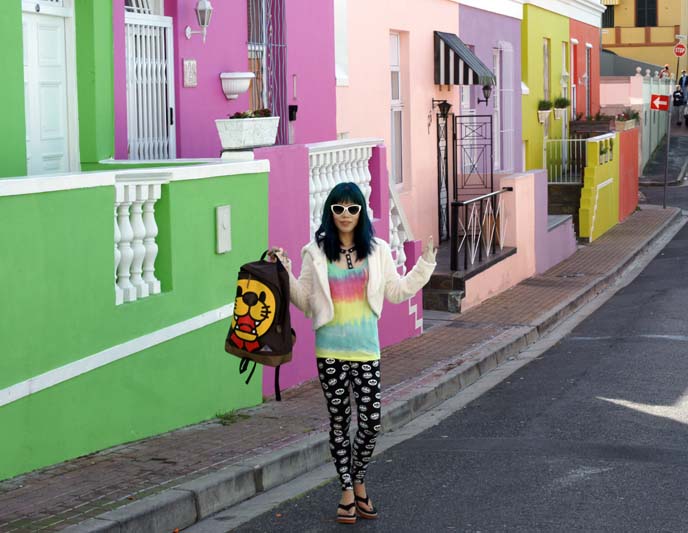
Did you know Cape Town is so colorful? My face says it all: I loved it here. On Day 1, I experienced the city’s kind people, diverse neighborhoods, soulful cooking, and intriguing history.
Follow my rainbow shoes, as I explore the South African city by land, air and water.
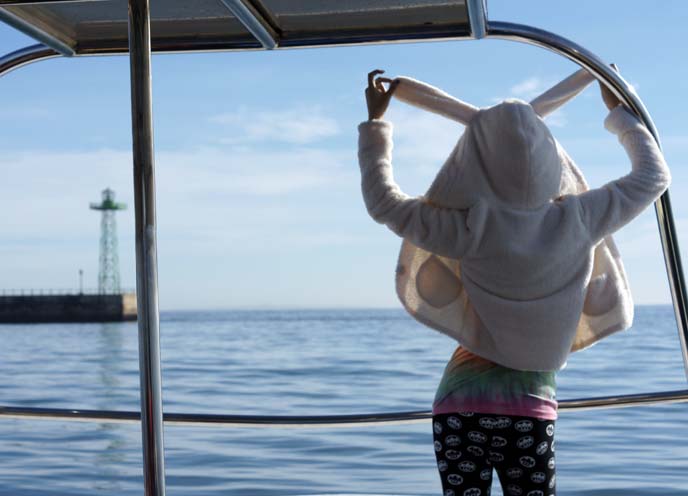
Cape Town’s colorful architecture inspired me to dress accordingly. I’m wearing a Goth/rainbow tie-dyed tank top by Gladnews (the Japanese brand in Shibuya 109). My bunny ears hoodie jacket is by Peace Now. The cute Batman leggings are from Hyoma in Izzue, Hong Kong.
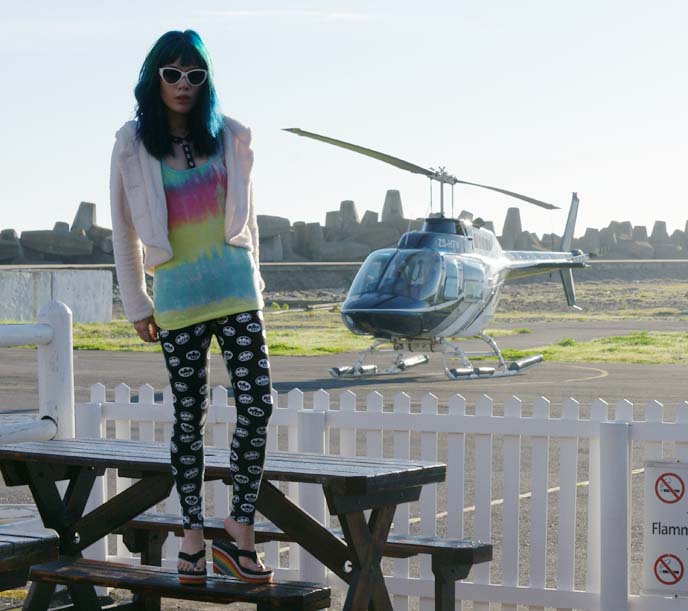
We started the day bright and early, with a private helicopter ride. There’s no better way to see the scenic city and its beaches on the Atlantic Ocean coastline.
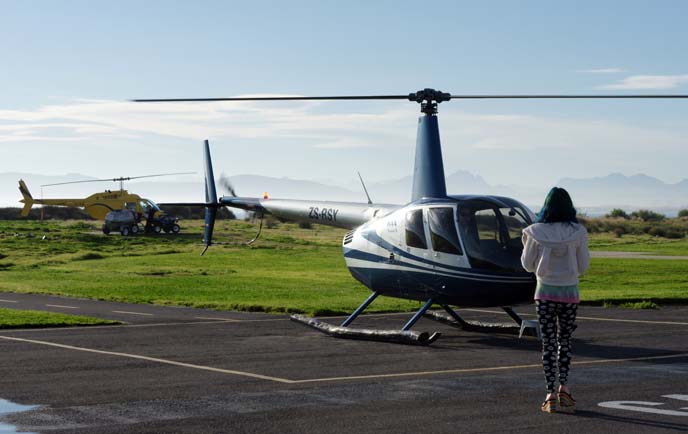
I was here with my two filmmakers, thanks to Cape Town Tourism. Photography in this post by Melissa Rundle and Eric Bergemann. They captured a cinematic shot of helicopters landing with lens flare.
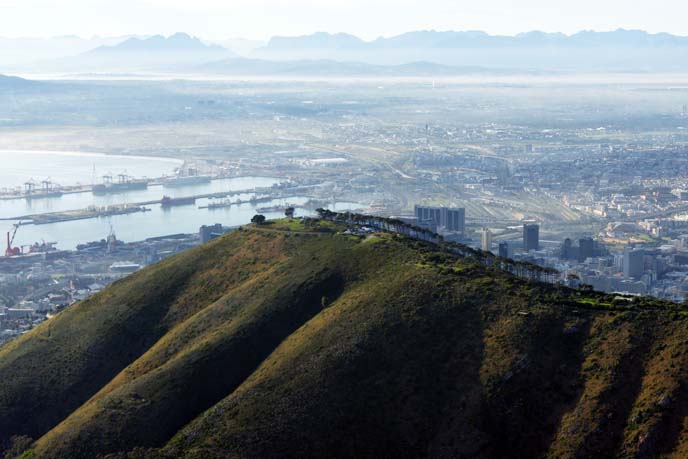
Up in the air — what fun! We felt safe during the helicopter ride, which was smooth and not too noisy. We could even communicate through microphones.
Out the window, we saw this mountain range with a Mohawk of African trees on top.
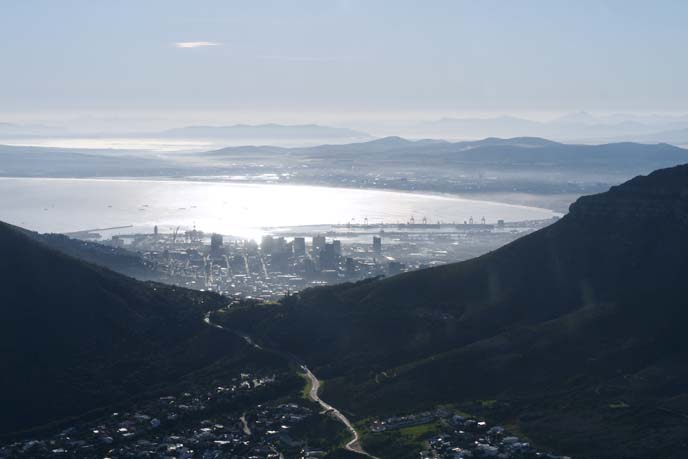
Cape Town began as a Dutch trading settlement, founded in 1652. As you’re probably aware, the city has a tumultuous history from the days of slavery and apartheid, to independence under Nelson Mandela. Today, Cape Town has a new and developed vibe, and is a safe destination for anyone to visit.
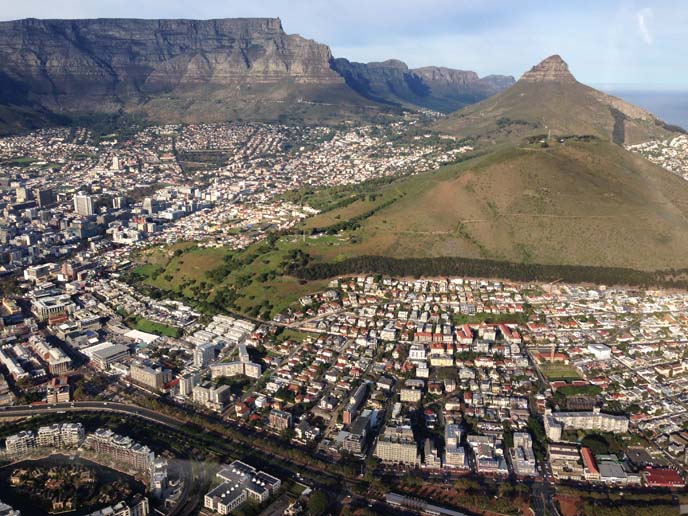
From any point in the city, you can see the famous flat Table Mountain, covered with a “tablecloth” of clouds. Next to it lies the Devil’s Peak, domed Lion’s Head, and Signal Hill.
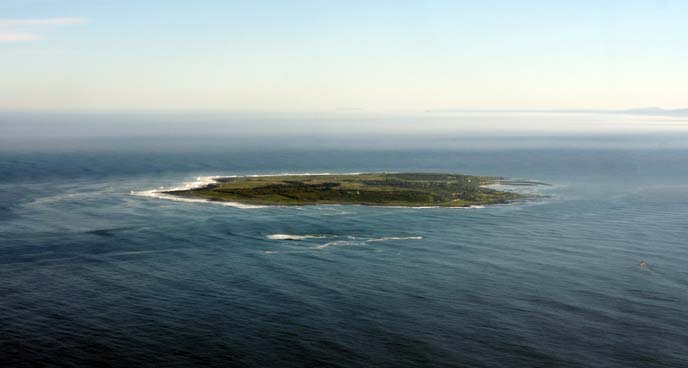
We flew over Robben Island, in Table Bay. Since the late 17th century, the Dutch have used this as a jail primarily for political prisoners, and as a leper colony. The first post-apartheid President of South Africa, Nelson Mandela, was famously imprisoned on Robben Island for 18 years.
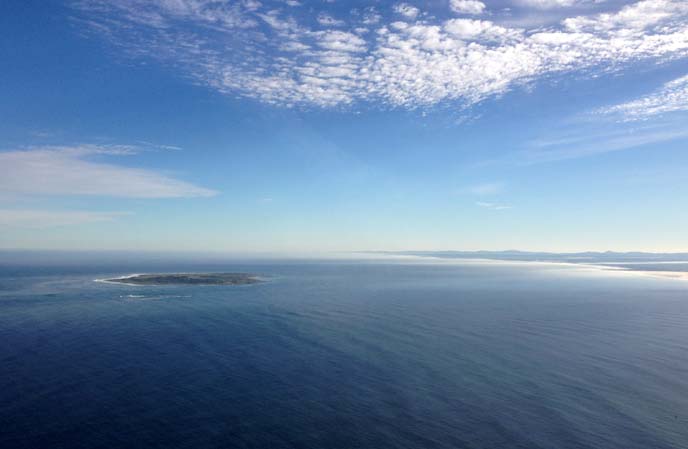
Today, Robben Island is a UNESCO World Heritage Site and museum. Many visitors take the ferry here, and go on tours led by guides who were formerly prisoners on the island.

Next, our driver took us to the Victoria & Albert Waterfront, a favorite destination among both locals and tourists. We sampled artisan bread, and browsed African goods in the gift stores. I posed beneath the Ferris wheel with my lion backpack from A Bros Products, Hong Kong.
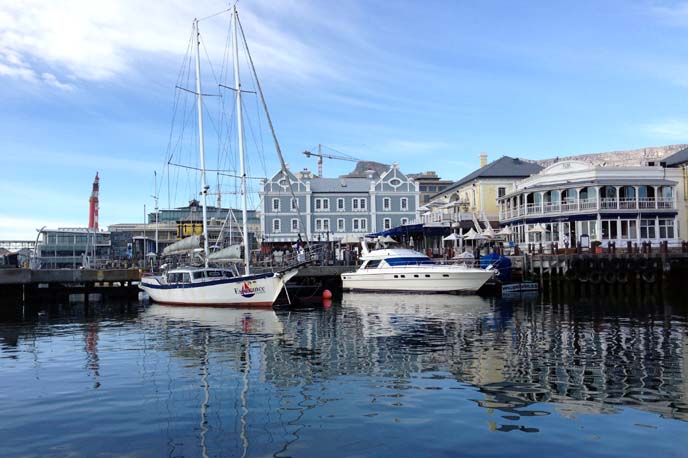
Lots of quaint buildings dot the V & A. There are many attractions for families including the Two Oceans Aquarium, and four museums.
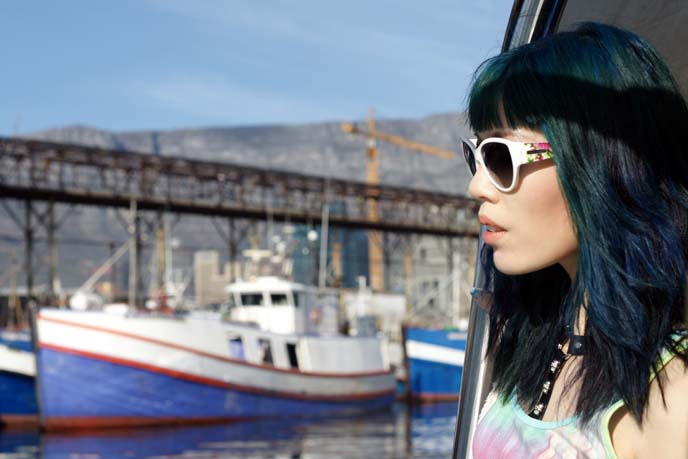
We went on a short boat ride around the harbor. A seal leaped out from the water!
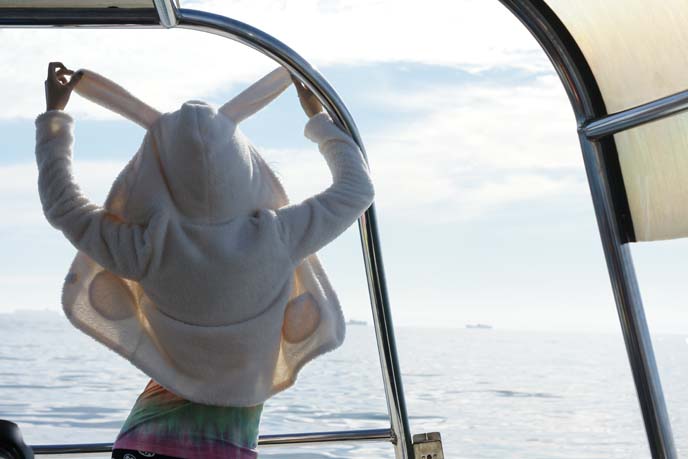
A bunny popped out too. The kids on the boat were rather amused.
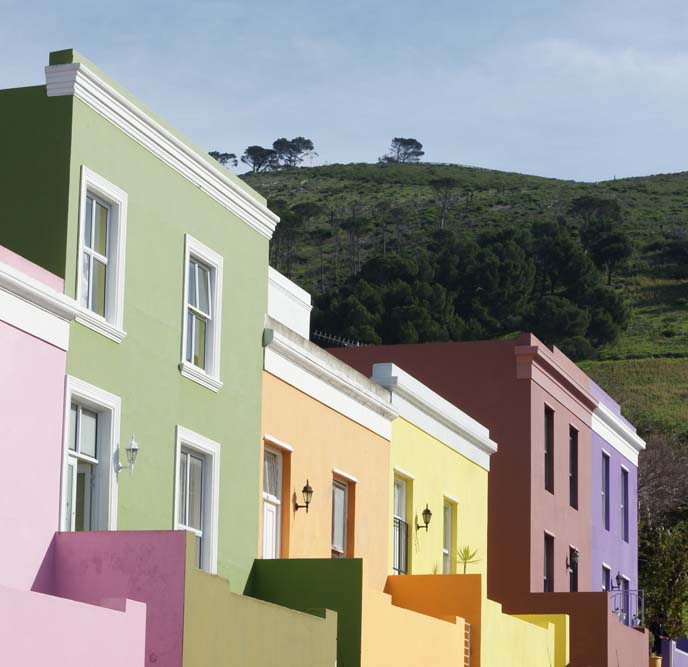
Onward to the Bo-Kaap district, distinguished by this row of rainbow-colored houses. This was the traditional neighborhood for the Cape Malay, an ethnic group descended from the Indian and Malaysian slaves brought over by the Dutch East India Company.
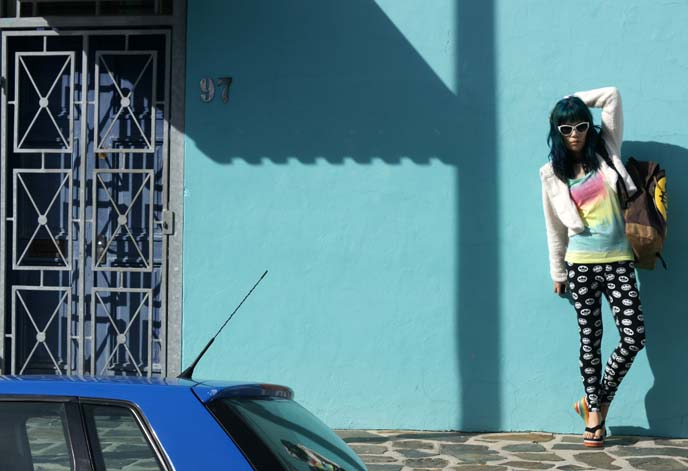
One of the oldest houses is now the Bo Kaap Museum, filled with photos and objects that chronicle the district’s history over the years. Our guide told us about the insane Dutch system of racial classification: Cape Town was divided into black, white, colored, and Indian (each with sub-sections). Many of residents were mixed, and rules were applied indiscriminately.
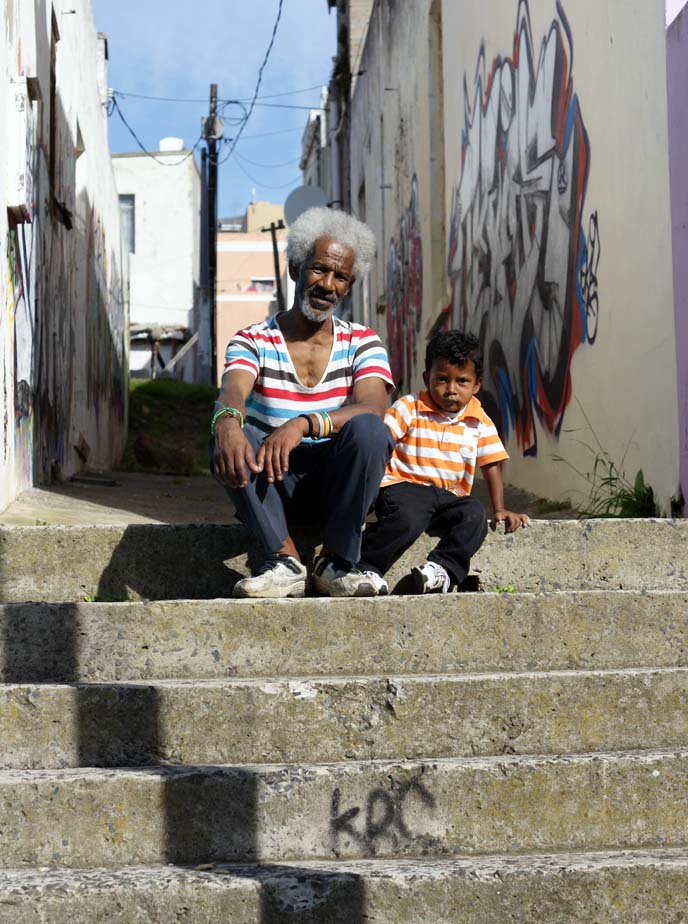
People of “lower” classifications were forced to relocate, often to segregated townships. They received worse treatment in prisons, and limited opportunities for jobs and businesses. I can’t believe that the apartheid system lasted in South Africa until 1994 — only 20 years ago.
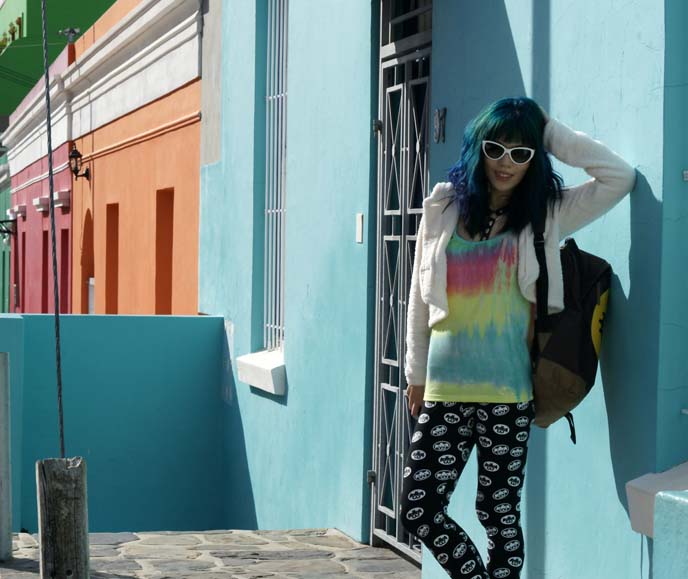
Today, Cape Town feels peaceful, and the city is a mix of cultures. Wale Street, found under Signal Hill, is full of character. In this mostly Muslim community, these houses are painted every year before Eid.
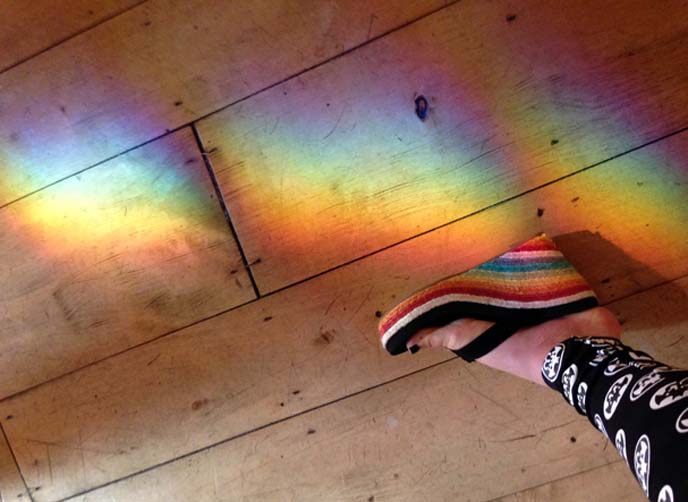
The colors match my sandals with a rainbow platform heel, from Shinjuku Studio Alta. I felt like wearing bright clothing the entire time I was here.
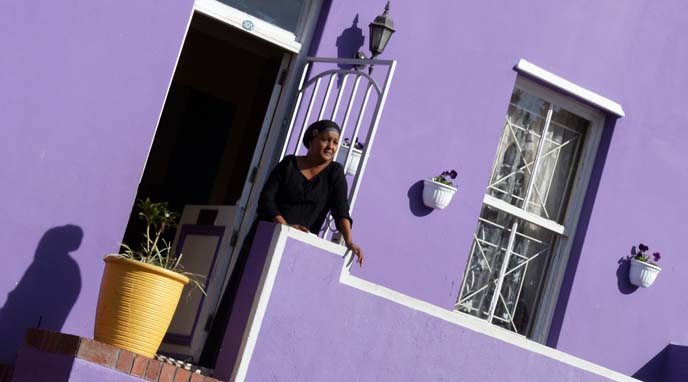
Faldela Tolker lives in the purple house. She offers a unique cooking tour: visitors come into her house to learn how to make Cape Malay specialties, and eat lunch at her table.
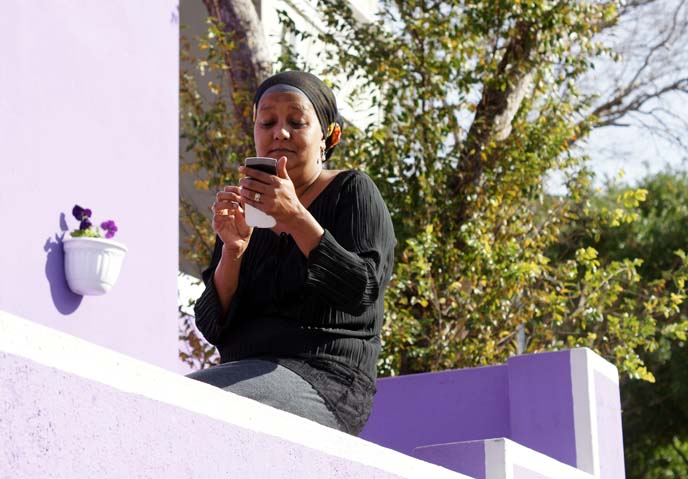
Faldela is one warm, sassy lady! We loved her stories and sayings, like “salt is love.” From the staircase, I glimpsed her grandchild peeking at our table.
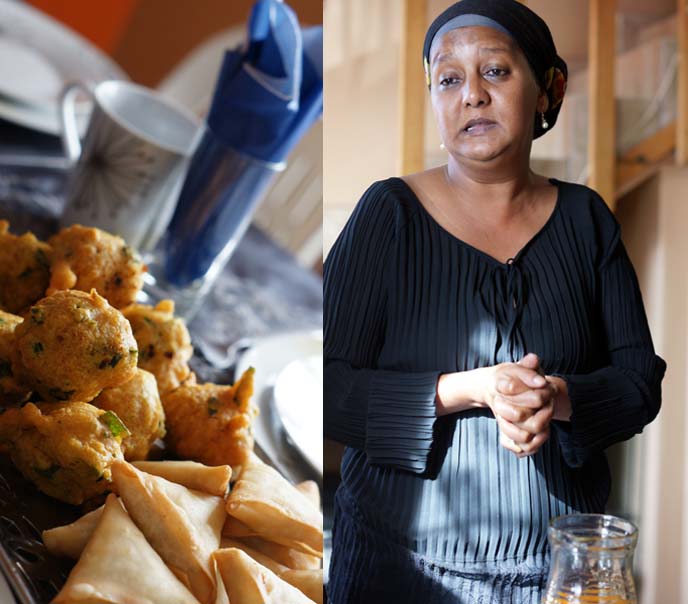
She served us samosas, with spicy sauces on the side. Next came a hearty tomato bredie (a distinctive stew with Indian flavors) and rice. We finished with sweet koesisters, a traditional syrup-coated doughnut, washed down with cardamom tea. It ended up being one of the most memorable meals I had in South Africa, and certainly the warmest.
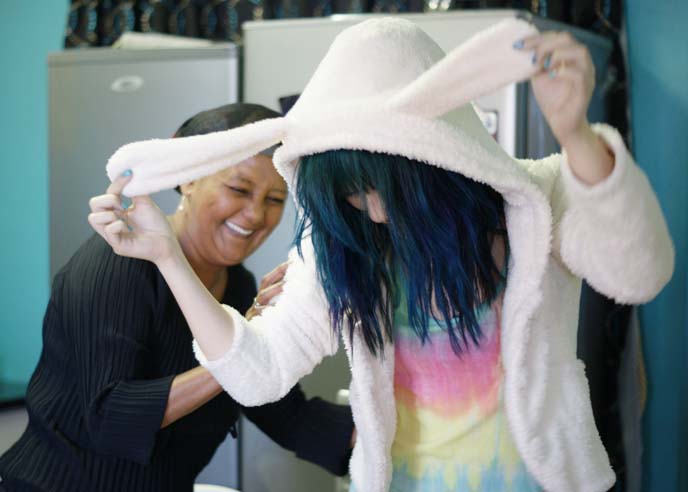
Faldela then showed us how to fold and stuff samosas. She laughed at my bunny hoodie and insisted on trying it on! There’s so much heart in this home, and I’m so grateful I got to join her Cape Malay cooking “safari”.
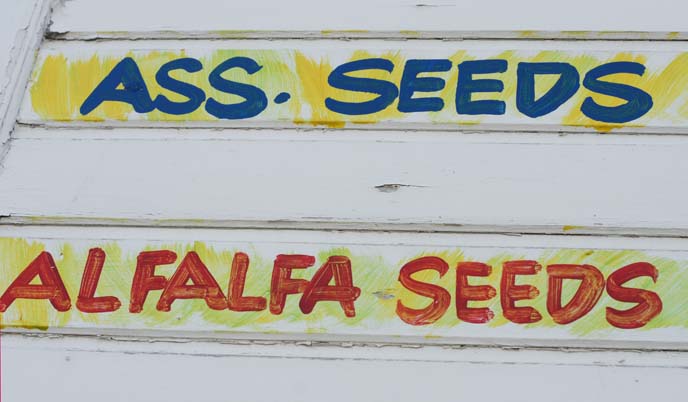
Across the street lies Atlas Trading, a 70 year old spice shop with bins of exotic flavors. I’m not sure what “ass seeds” are. In the back, we even found cannabis and opium scented incense.
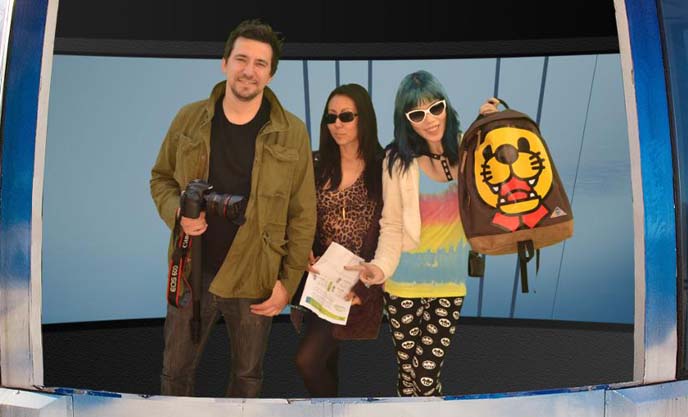
My crew and I ended the afternoon by taking the cable car up Table Mountain. Can you believe we did all of this in a day? Everything is close together in Cape Town, so you never have to travel far to reach attractions.
Before boarding the “aerial cableway,” each group takes a photo in front of a green screen.
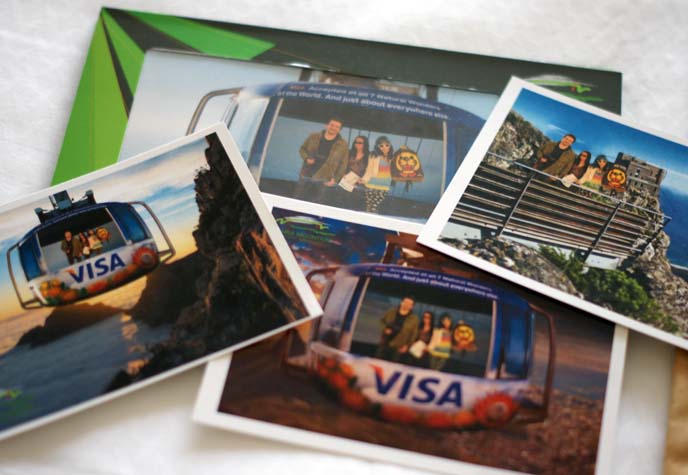
When we left, we saw that this image was superimposed on various backdrops, and packaged as a souvenir! So touristy and cheesy that we had to get them. I can’t stop laughing at how ridiculous we look.
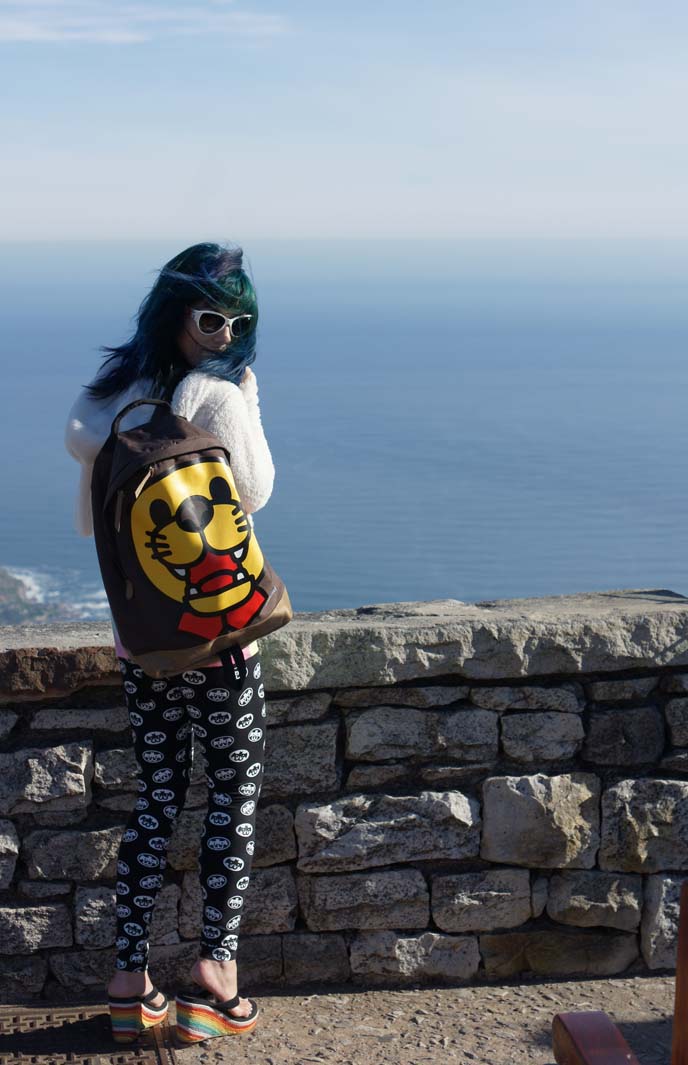
From the top of Table Mountain, we looked down at the rocky coastline and city. I admit we were a bit spoiled by the views we had already seen from the helicopter ride.
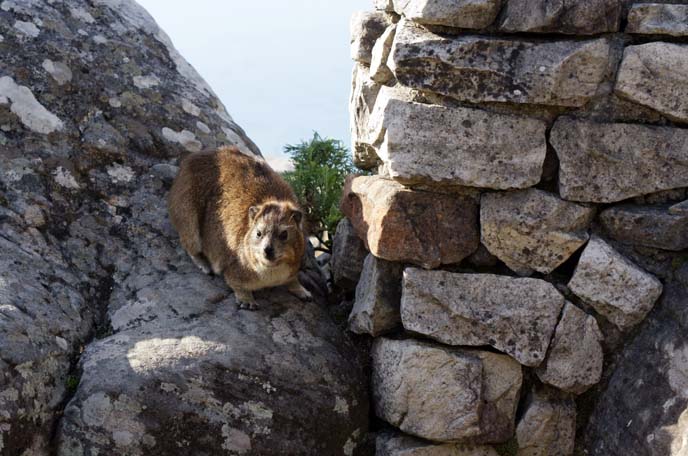
On the way back, we ran into a dassie, a squirrel-like rodent found only in southwestern Africa.
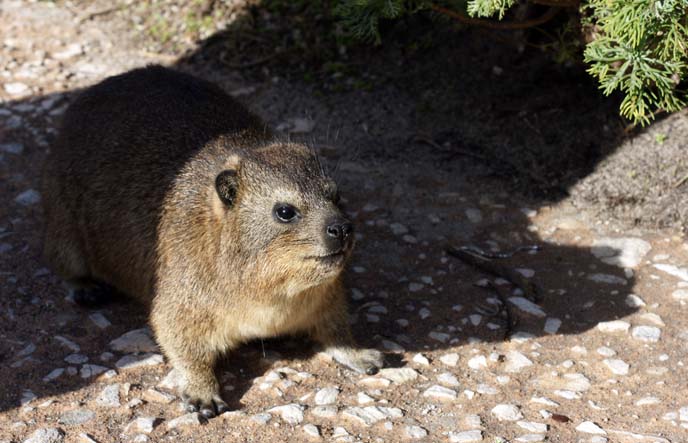
The dassie lives on rocky outcroppings, and since there are tourists carrying food on Table Mountain, they’ve become rather bold.
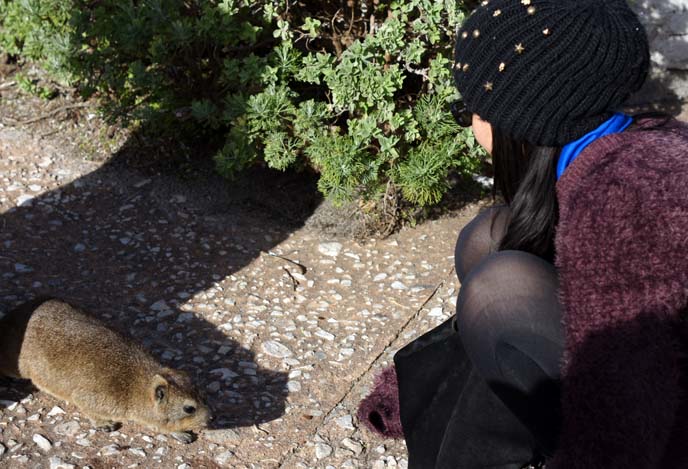
Melissa is doing a big no-no… One shouldn’t touch these wild animals! At least she didn’t get bitten, unlike the peacock that pierced her skin during our safari.

Back to my room at the Taj Hotel. I lay on the bed and stared out at this view of the mountain ranges.
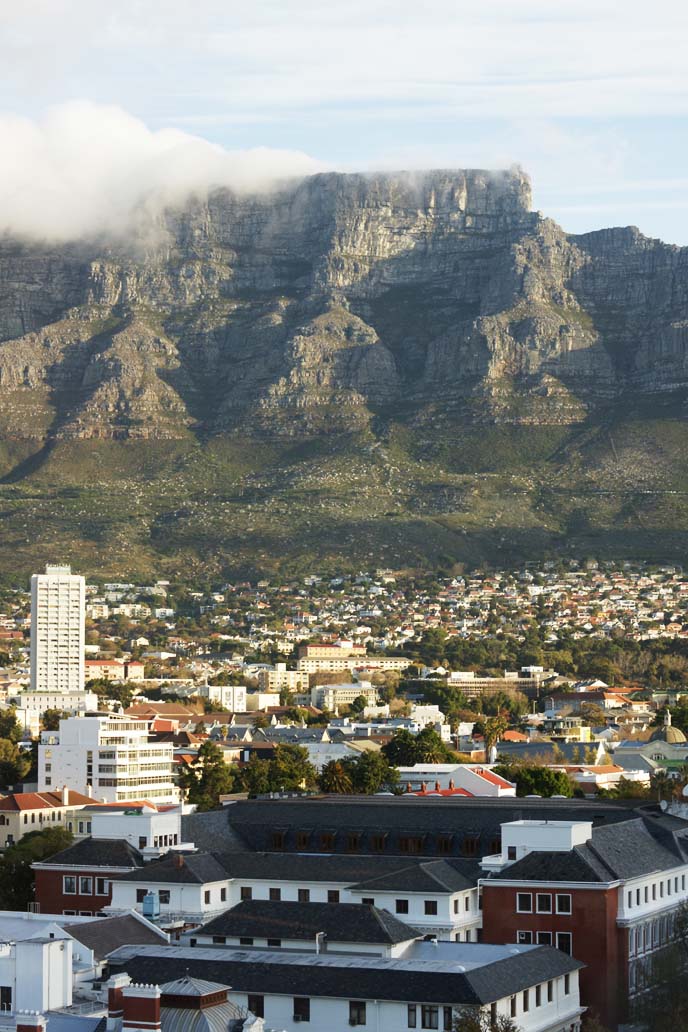
A million thank yous to Cape Town Tourism, for bringing us to this fascinating and beautiful city! Coming up, I’ll take you on a tour of the street art, fashion designers, and African cuisine.

Did you expect South Africa to look like this? Don’t miss out on the bonus photos of my trip, on my @lacarmina Instagram.
SHARE & COMMENT
Safari near Cape Town, South Africa! Aquila game reserve lions, elephants.
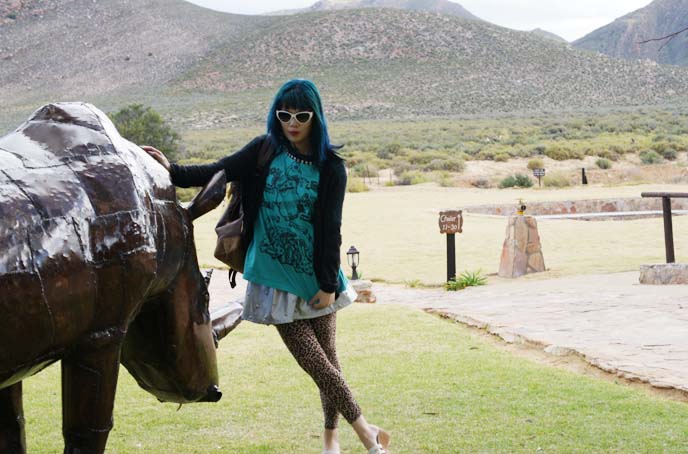
A dream come true… I went on safari in South Africa!
Cape Town Tourism brought my travel filmmakers and me to Aquila Game Reserve, located two hours from Cape Town. Without having to “rough it” in the bush, we got to see the Big Five animals up close and in a natural environment.
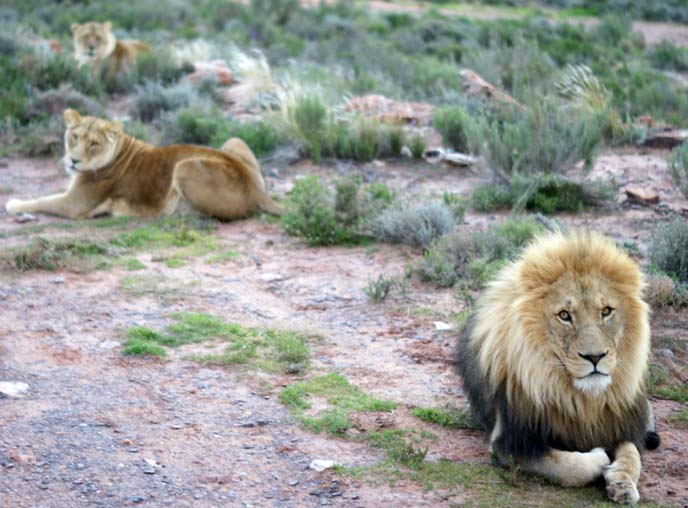
Aquila’s 7500 hectares holds hundreds of African species, including endangered ones. We saw lion kings,
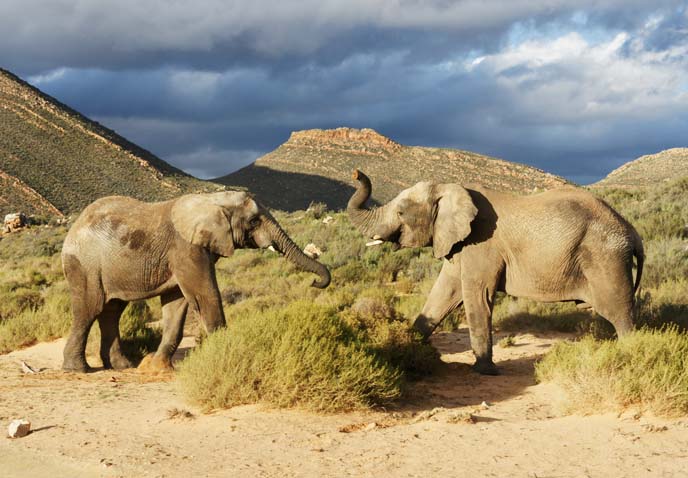
… playful elephants beneath the Cape Karoo mountains,
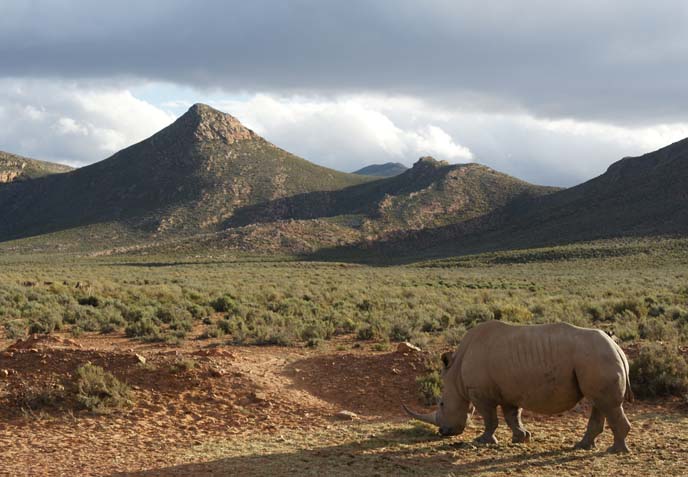
… and the mighty rhinoceros, which the reserve is fighting to protect from extinction. (The other two of the “Big 5” animals are the Cape buffalo, and the African leopard.)
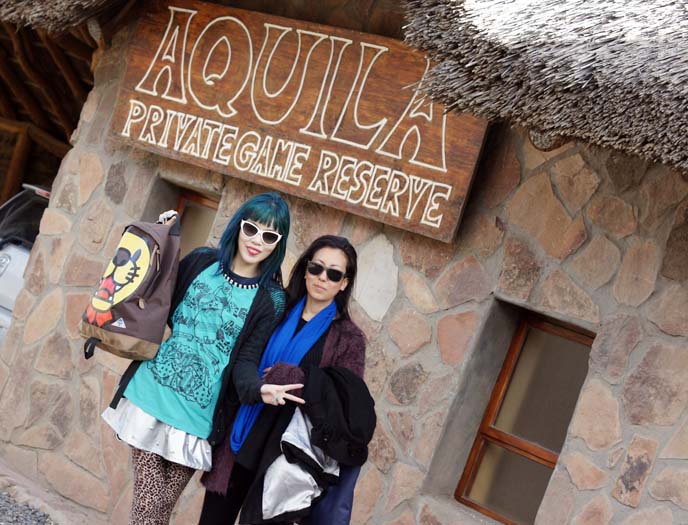
My travel team and I are adamant about only supporting ethical places, where animals are well treated (no tiger temples or ocean parks, for example). We were glad to see Aquila’s commitment to responsible practices and anti-poaching. Our guide worked in rhino conservation for years, and we could sense his passion from the way he described the animals.

Aquila is a private game reserve and offers “safari drives” in the morning and evening, lasting about three hours long. There are also bicycle, horseback, and overnight options, but we aren’t exactly the hardy outdoor types…
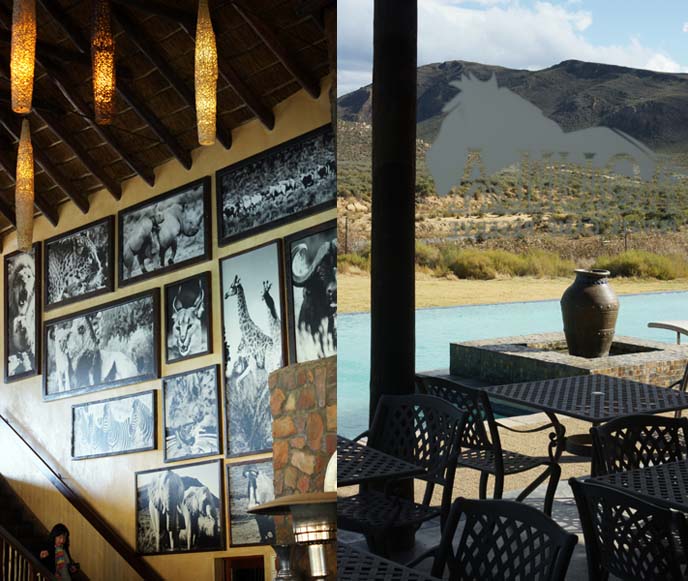
… and preferred to enjoy the quaint lodges and cabins. We arrived just before lunch time, and made our way to the buffet.
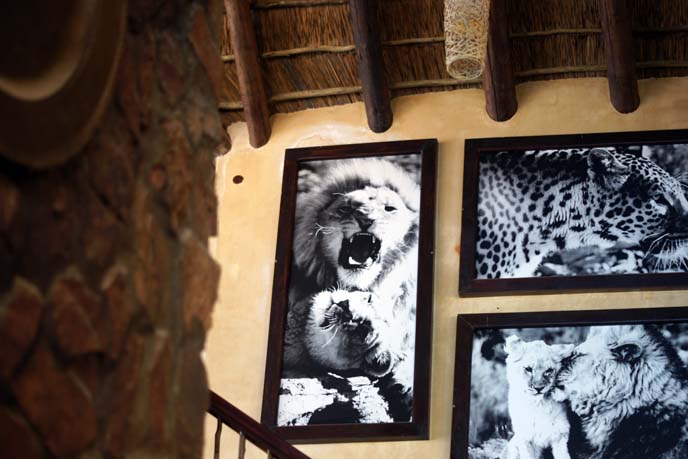
These black and white photos on the wall made me miss my Scottish Fold, but got me excited to see the big cats up close.
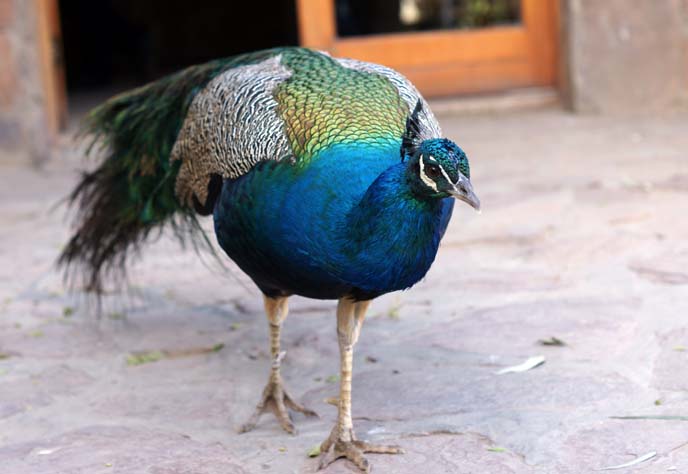
My first encounter with creatures: a peacock, near the welcome entrance. The blue and gold feathers are luminous.
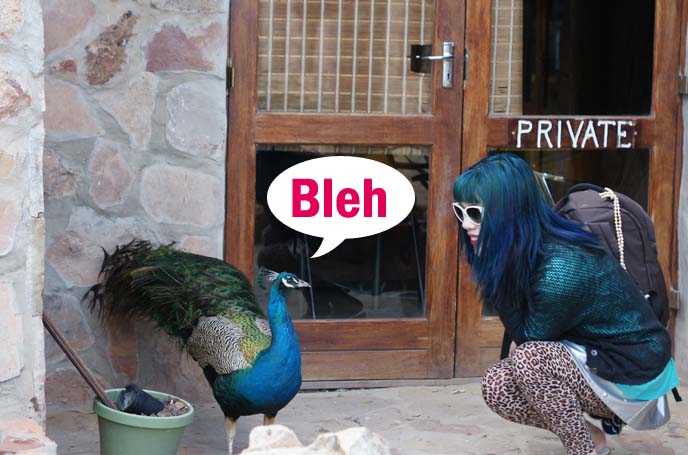
If I could talk to the animals, like Dr Doolittle, what would they say to me? Probably “Bleh.” (My outfit details are described below.)
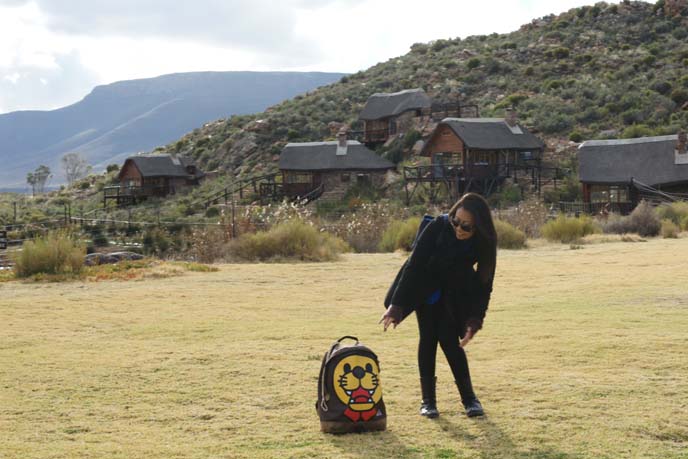
Number one rule, which filmmaker Melissa is breaking: don’t touch the wild animals. Lions may look fuzzy, but their predator instincts are sharp.

We settled into a covered safari vehicle, and our guide drove us through the reinforced gates. He reminded us to keep limbs inside at all times, and not make startling noises.
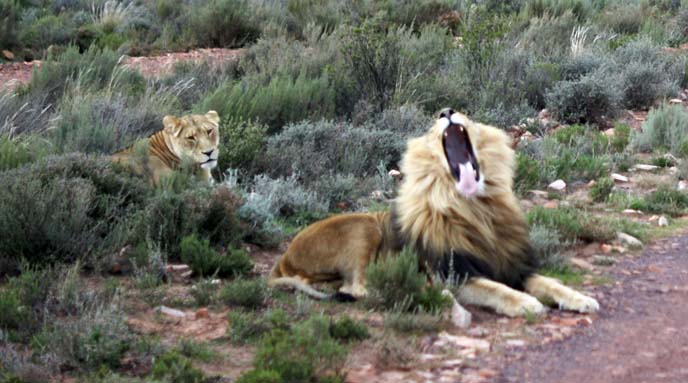
These lions were saved from “canned hunt” operations. When the guide described this torturous practice, I wanted to cry. Canned hunting is when animals are put in a confined area — almost like a large gladiator arena — so that “trophy hunters” can easily find and kill them.
The lion pride resides in a separate fenced section of land. Since they grew up in canned hunting operations, they don’t have the skills to survive in the African wilderness. Aquila lets them live in a naturalistic home, while getting care from the staff.

How can anyone want to shoot these creatures? Our guide told us about something even worse: big game hunting, done from online! People would use their computer screens to track animals, and press a button to shoot them. It’s like the horror movie Hostel come to life.

Fortunately, these lions now have the chance to enjoy life. From our vehicle, we got to see some National Geographic action. The male lion prowls towards the female…

… gets behind her, and nibbles her neck. You can guess what happens next! (I actually took a video of the lion mating; you know you want to see it.)

“Can you feel the love tonight?” It didn’t last long, but the lion king got a kiss after.

Yet another section is home to cheetahs and leopards. So sad: this leopard was fattened up for a canned trophy hunt, to the extent that his stomach hung to the ground. Once again, Aquila gives these rescued animals a secure home, and even has a cheetah breeding program.
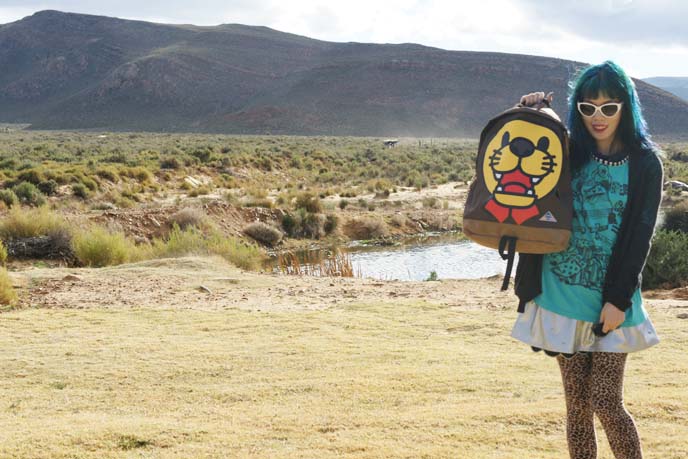
Tip: even though you’re in Africa, dress warm. We visited during their winter (July), and there was a strong wind. I am wearing a million layers under my Algonquins top, and silver skirt by Candy Stripper (both from Tokyo). My happy lion backpack is a present from A Bros Products in Hong Kong. The leopard print tights are a random purchase from somewhere in Asia.
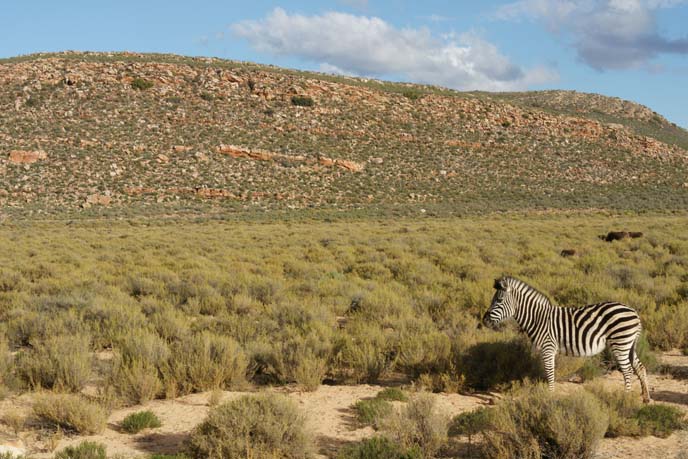
It was fun to drive around the immense main reserve, and look for animals. We spotted zebra print among the tall grasses. (Here’s a video of the zebras flipping their ears and tails; it’s quite different to see the safari in motion.)
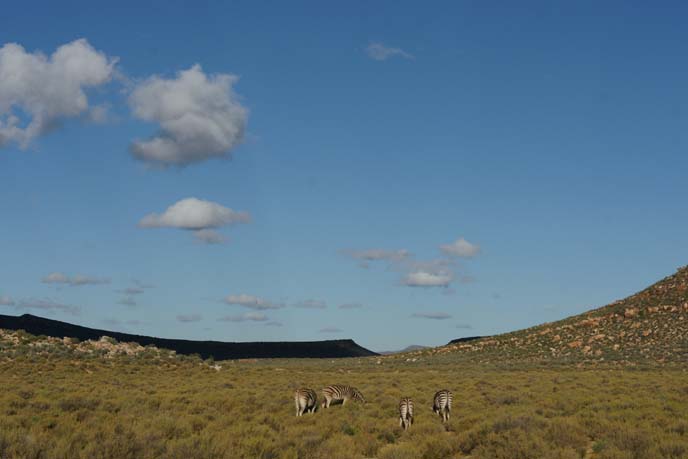
Indescribable, the joy of seeing animals in this manner.
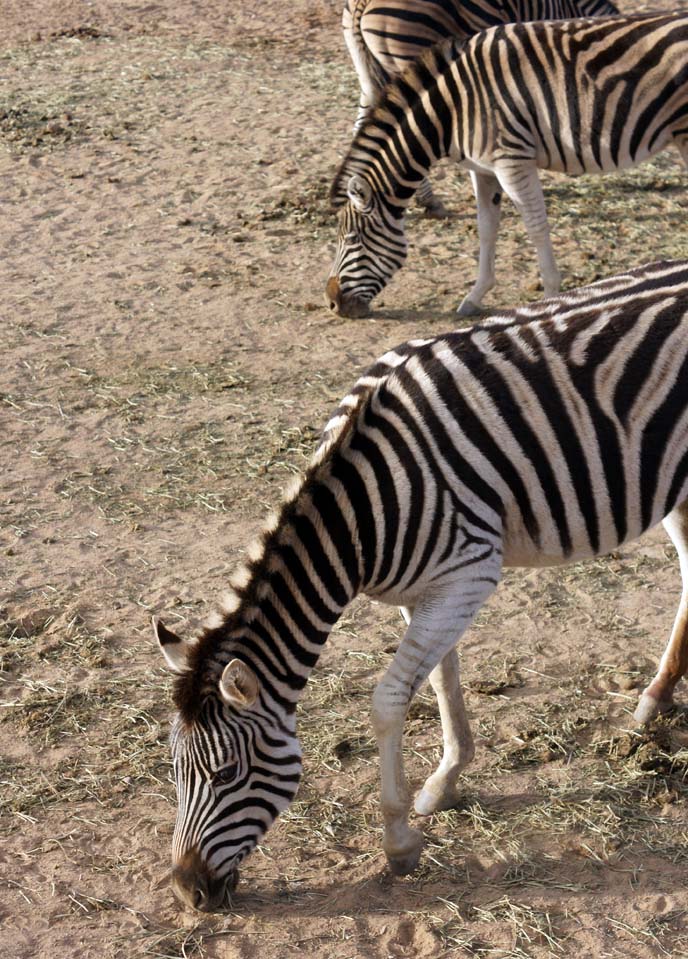
Our guide parked us close to the creatures, and told us fascinating facts about them. We learned that if the zebra’s mane flops to one side, it isn’t healthy. And why can’t we ride zebras? Because they have a different spine structure from horses, which doesn’t let them support the weight of a rider.
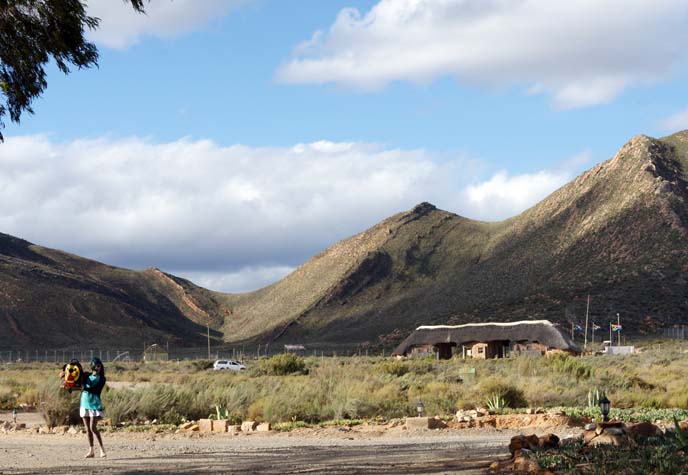
He also told us that our cabins are well away from the animals… because once, a water buffalo charged through the door!
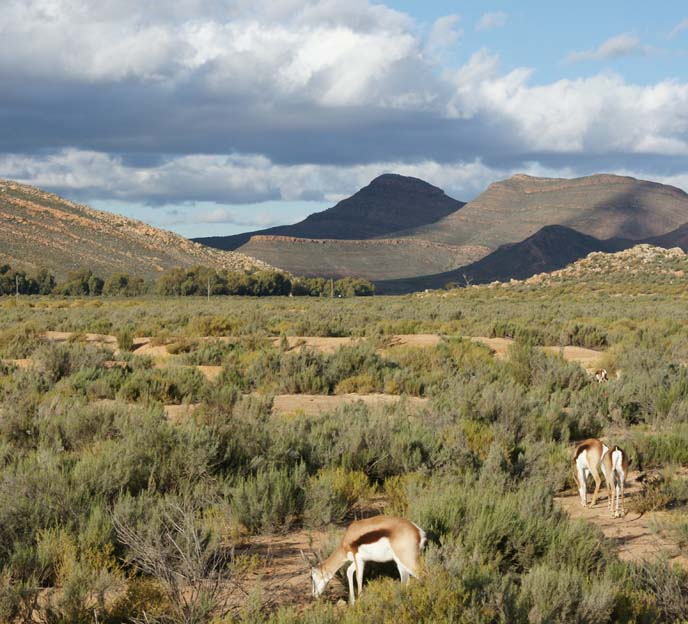
These are springbok, a type of antelope-gazelle. As their name suggests, they’ve got a spring in their step.
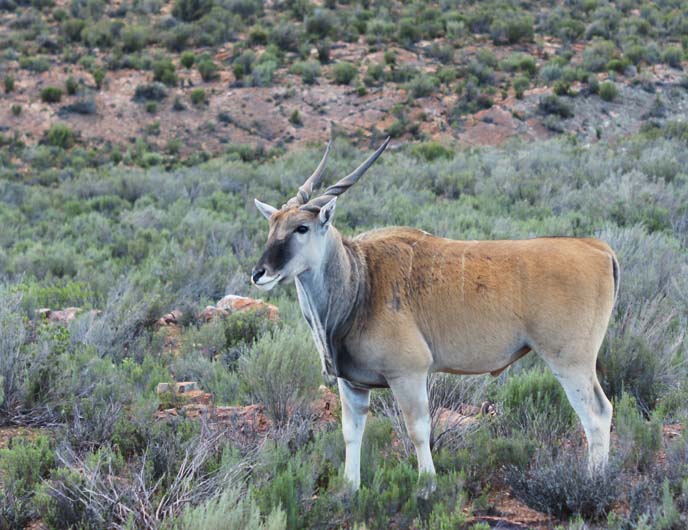
Here’s an eland, or antelope with twisted horns. We also spotted the grumpy-looking water buffalo, but weren’t quick enough to get a photo.
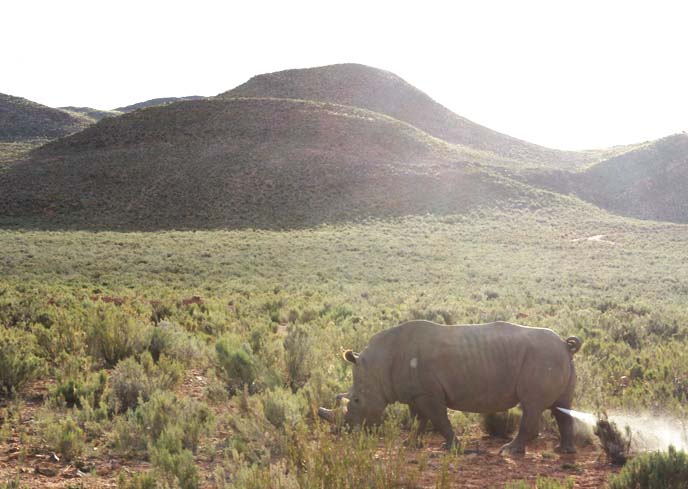
We had rather good luck at capturing animals doing “natural activities!” Since the rhinoceros is severely threatened by poachers, out to cut off their horns, Aquila has a “Saving Private Rhino” initiative. They focus on training programs to prevent attacks.
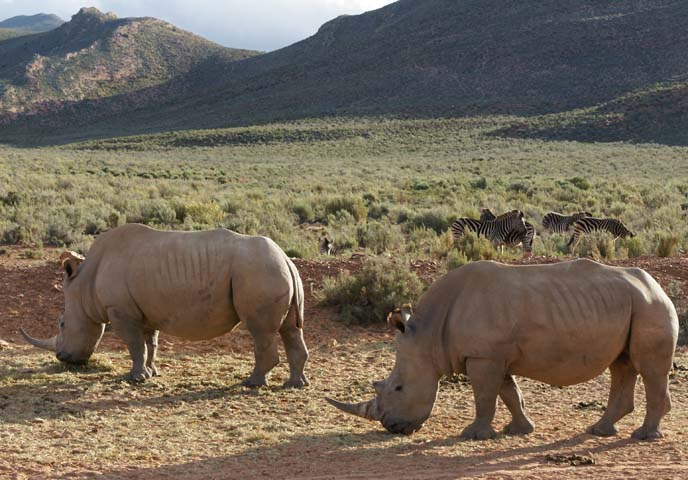
Our guide taught us to identify white rhinos. They look a lot like black ones but are taller, have a bigger head and larger hump on the back, and tend to hang in large groups, eating grass.
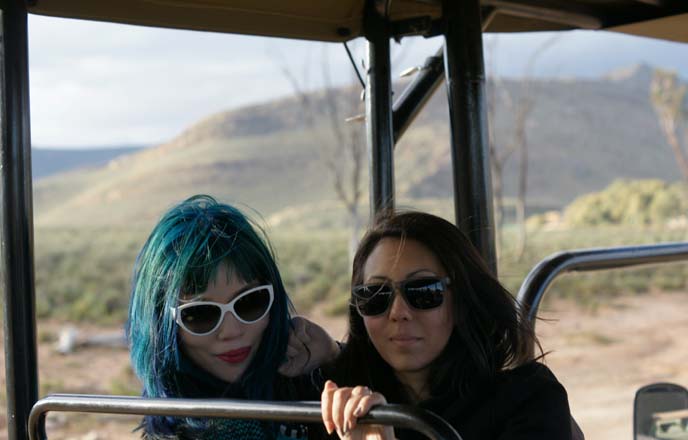
We kept warm with blankets from the guide’s stash. Sunglasses and sunscreen are a must, as you’ll be outdoors for several hours.
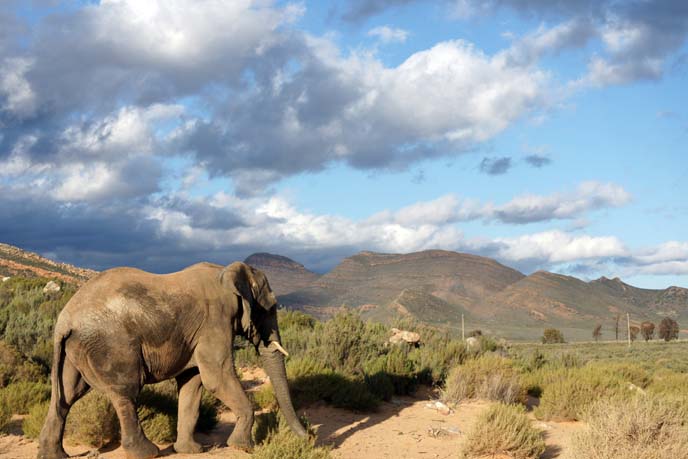
The elephants were heading to the mountains, but we caught up with them just in time.
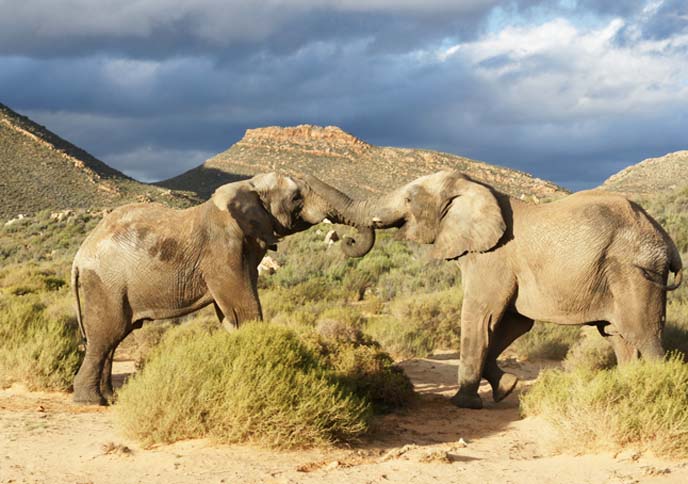
These elephants are teenagers, playing together with their trunks!

They’re such peaceful, happy animals. Our guide told us the difference between African and Indian elephants: the African ones are larger and more wrinkled, with full rounded heads, and ears shaped like the continent.
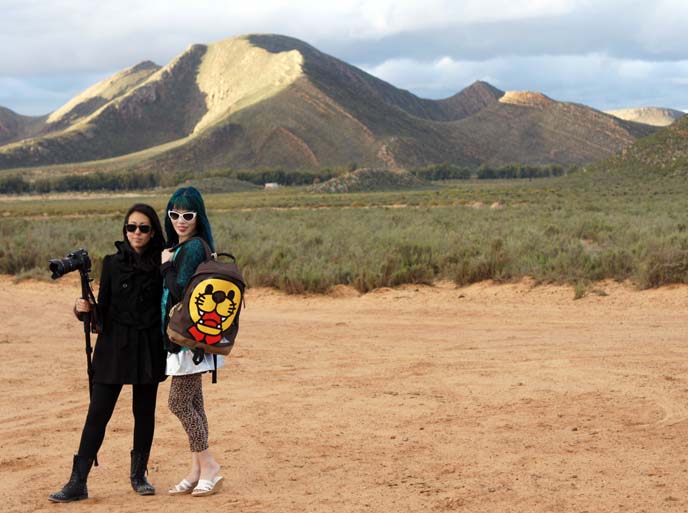
The vehicle stopped, and we all took a few minutes to stretch our legs. (Photos by Melissa Rundle and Eric Bergemann.)
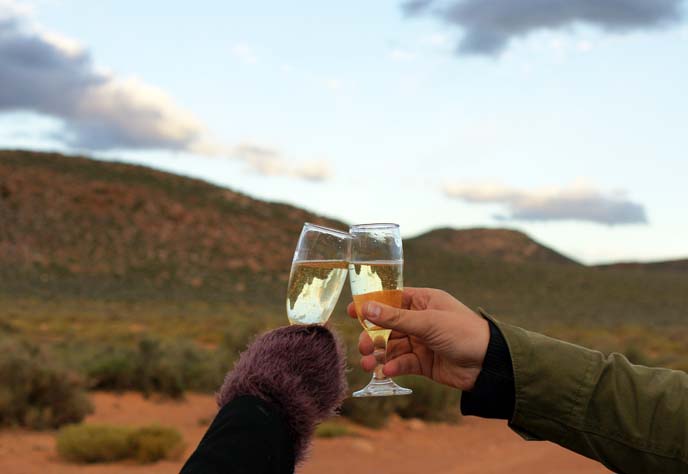
The guide offered us nuts (no thanks, allergies) and champagne (why yes!). Cheers.
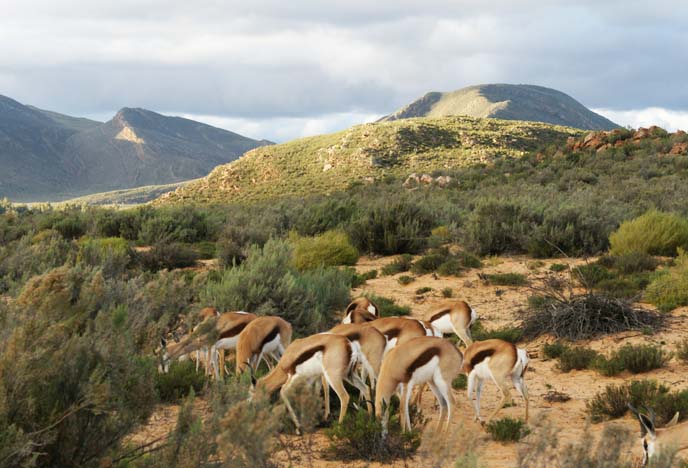
We didn’t want our safari game drive to end. There’s something magical about being in an environment like this, simply observing the animals as if you were one of them.
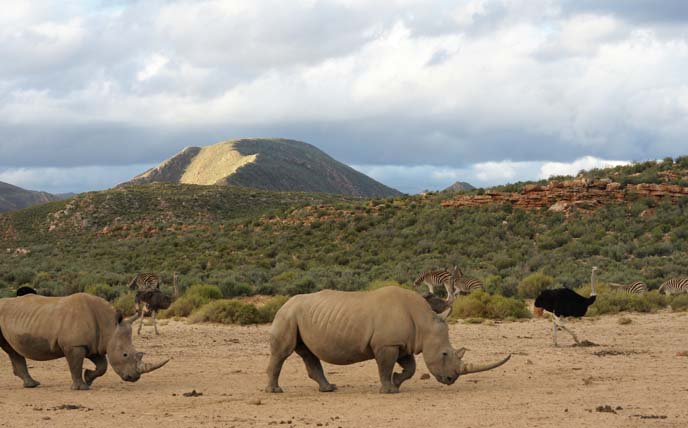
Near the watering hole, multiple species gathered. I spotted zebras, ostriches, rhinos, and the little symbiotic birds (oxpeckers) that perch on their backs.
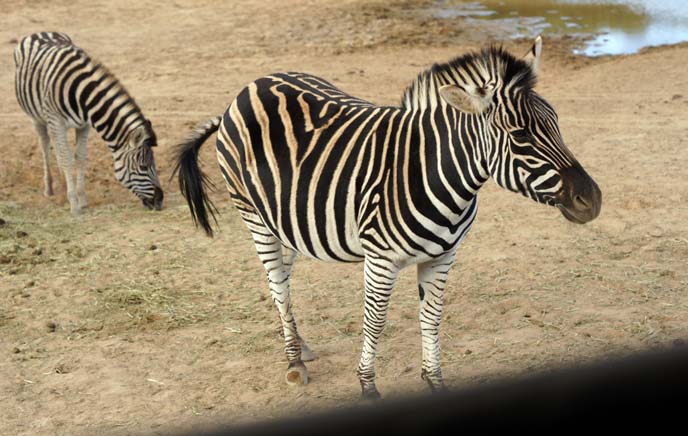
Only one word to describe this look… kawaii!
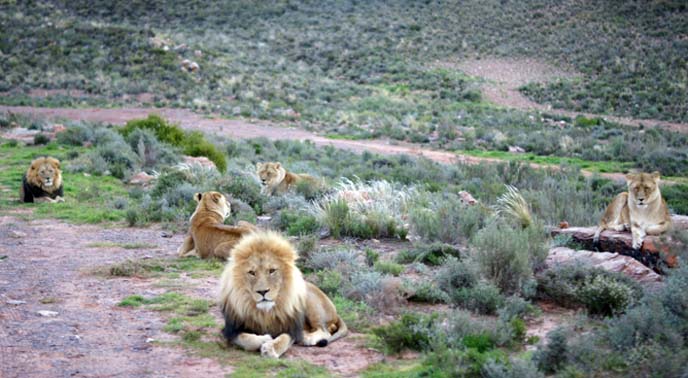
How many lions can you count? Funny how their expressions and postures are exactly like my Scottish Fold cat’s.
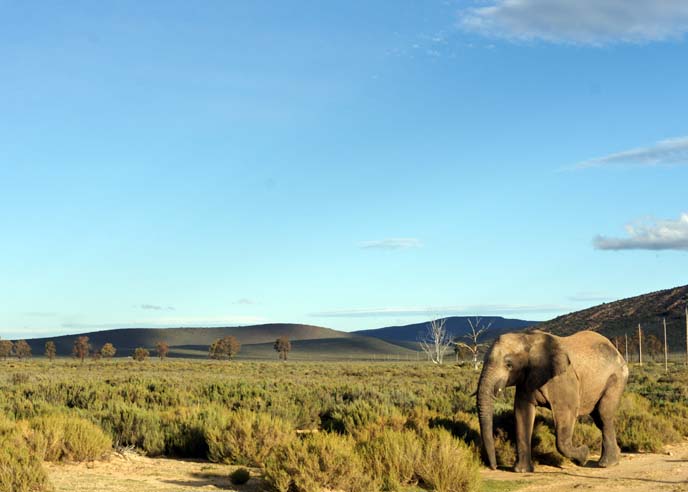
There’s more about Aquila Game Reserve and their conservation efforts on their site. While this safari is more tourist-oriented than some others, the big benefit is that you can easily make a day trip here from Cape Town.
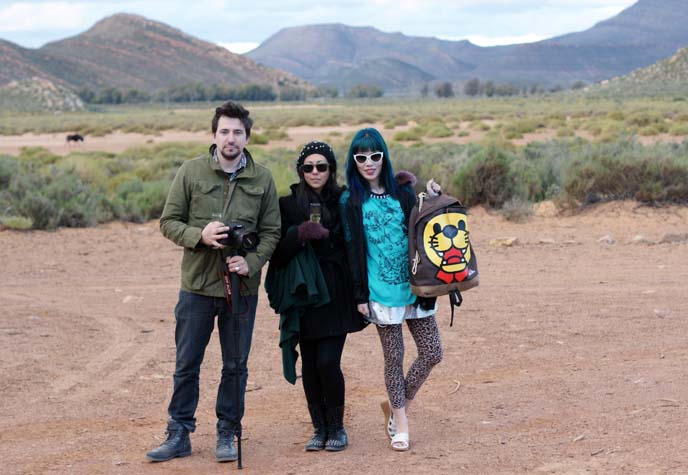
Thanks to Cape Town Tourism for making this report possible. I hope all of you will get a chance to experience safari. It’s as amazing as everyone says.
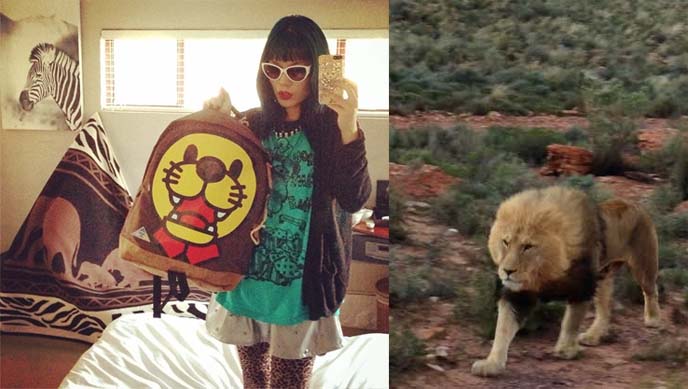
Some final shots from my Instagram, of the cozy African-style rooms and a lion in motion.
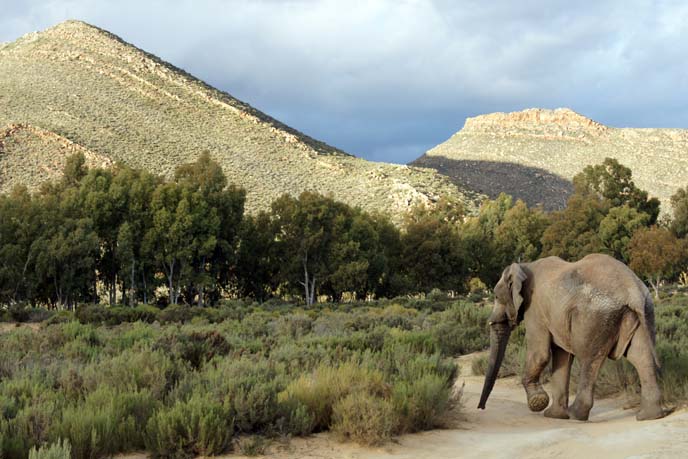
Have you ever seen lions, giraffes or elephants in person? Is safari on your travel dream list?
 LA CARMINA
LA CARMINA






